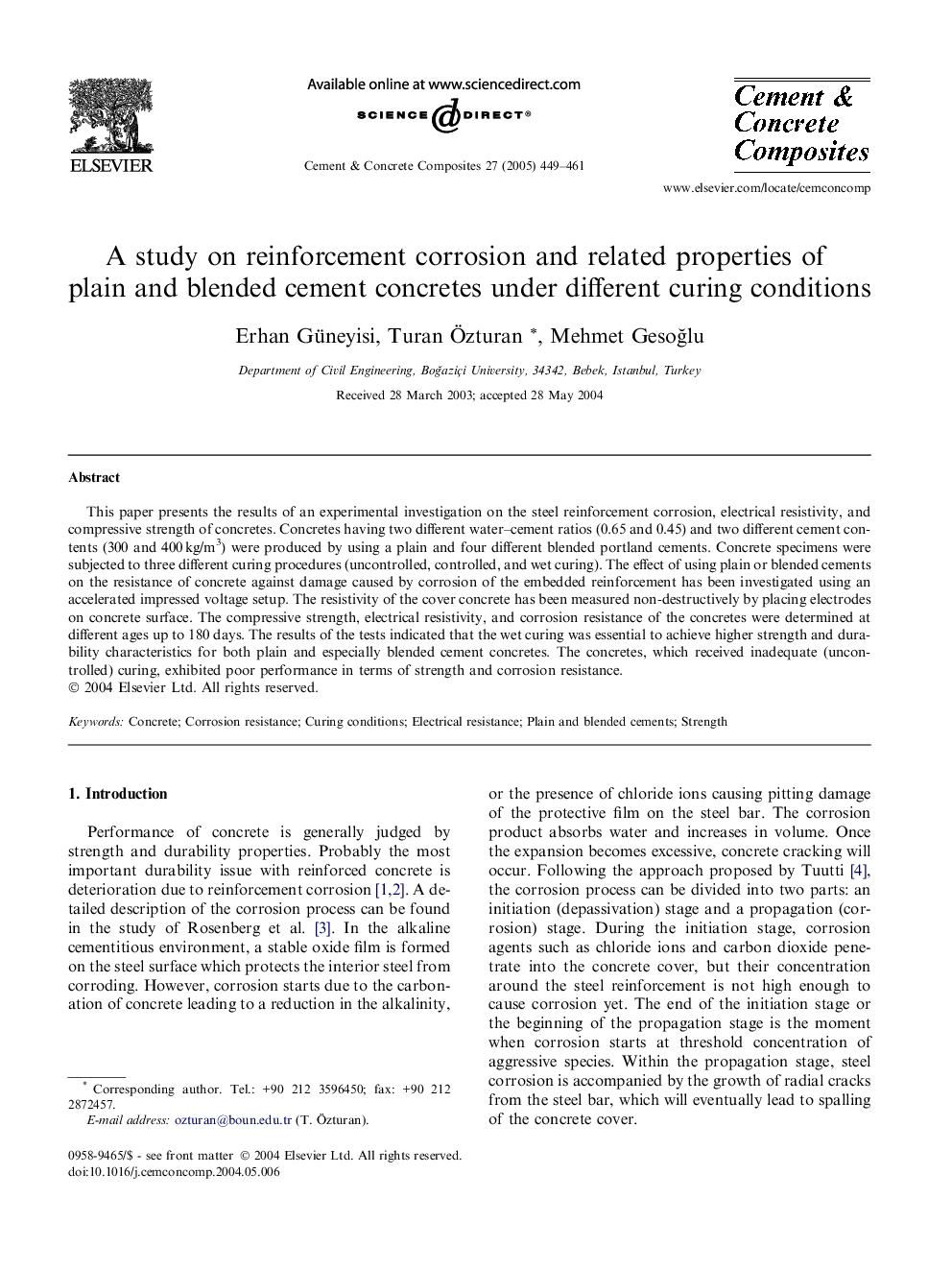| Article ID | Journal | Published Year | Pages | File Type |
|---|---|---|---|---|
| 10621938 | Cement and Concrete Composites | 2005 | 13 Pages |
Abstract
This paper presents the results of an experimental investigation on the steel reinforcement corrosion, electrical resistivity, and compressive strength of concretes. Concretes having two different water-cement ratios (0.65 and 0.45) and two different cement contents (300 and 400Â kg/m3) were produced by using a plain and four different blended portland cements. Concrete specimens were subjected to three different curing procedures (uncontrolled, controlled, and wet curing). The effect of using plain or blended cements on the resistance of concrete against damage caused by corrosion of the embedded reinforcement has been investigated using an accelerated impressed voltage setup. The resistivity of the cover concrete has been measured non-destructively by placing electrodes on concrete surface. The compressive strength, electrical resistivity, and corrosion resistance of the concretes were determined at different ages up to 180 days. The results of the tests indicated that the wet curing was essential to achieve higher strength and durability characteristics for both plain and especially blended cement concretes. The concretes, which received inadequate (uncontrolled) curing, exhibited poor performance in terms of strength and corrosion resistance.
Related Topics
Physical Sciences and Engineering
Engineering
Industrial and Manufacturing Engineering
Authors
Erhan Güneyisi, Turan Ãzturan, Mehmet GesoÄlu,
